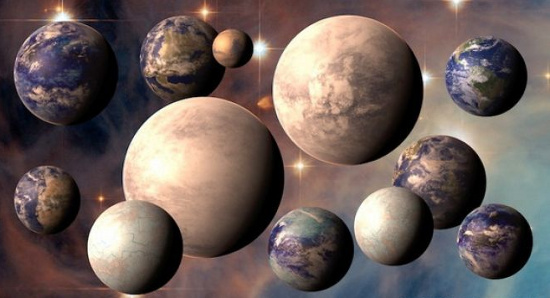100 billion planets reside in the Milky Way
American astronomers predict the Milky Way is home to at least 100 billion stars and 100 billion planets.

The number of planets in the Milky Way might reach 200 billion. (Photo: Space)
Jonathan Swift, a researcher at the California Institute of Technology in the US, and colleagues studied five planets orbiting a star about 915 light-years away from the earth.Kepler-32 , the name of the five-planet system, was discovered by the Kepler space telescope, The Astrophysical Journal.
The star in the Kepler-32 system is a M-dwarf star, which is small and has a lower temperature than the sun. M-class dwarfs are the most common type, accounting for about 75% of the more than 100 billion stars in the Milky Way.
Moreover, 5 planets in the Kepler-32 system are about the same size as the globe and quite close to their own stars. The Kepler Space Telescope also sees similar planets revolving around other M-class dwarfs.
"So we conclude that Kepler-32 is representative of the majority of planets in our galaxy , " the team argues.
Based on a series of elements in the Kepler-32 system (such as star brightness, planetary surface temperatures, Kepler's observing glass capabilities), Swift and colleagues suggest that at least one rotating planet around a star in the Milky Way. Because the Milky Way contains at least 100 billion stars, it also contains at least 100 billion planets. Even the research team said that the number of planets could reach 200 billion.
- There are at least 50 billion planets in the Milky Way
- 100 billion planets in the Milky Way
- The Milky Way has billions of planets close to Earth
- Two more decades will meet
- Mysterious planets have a 'mother' from another galaxy
- The mass of the Milky Way
- Enjoy the pure Milky Way season
- There are billions of planets like Earth
- Close up of the Milky Way's
- Discovering cosmic dust clusters inside the Milky Way galaxy
- The Milky Way might contain 10 billion Earth-like planets
- Photo of the largest Milky Way galaxy ever
 Van Allen's belt and evidence that the Apollo 11 mission to the Moon was myth
Van Allen's belt and evidence that the Apollo 11 mission to the Moon was myth The levels of civilization in the universe (Kardashev scale)
The levels of civilization in the universe (Kardashev scale) Today Mars, the sun and the Earth are aligned
Today Mars, the sun and the Earth are aligned The Amazon owner announced a secret plan to build a space base for thousands of people
The Amazon owner announced a secret plan to build a space base for thousands of people